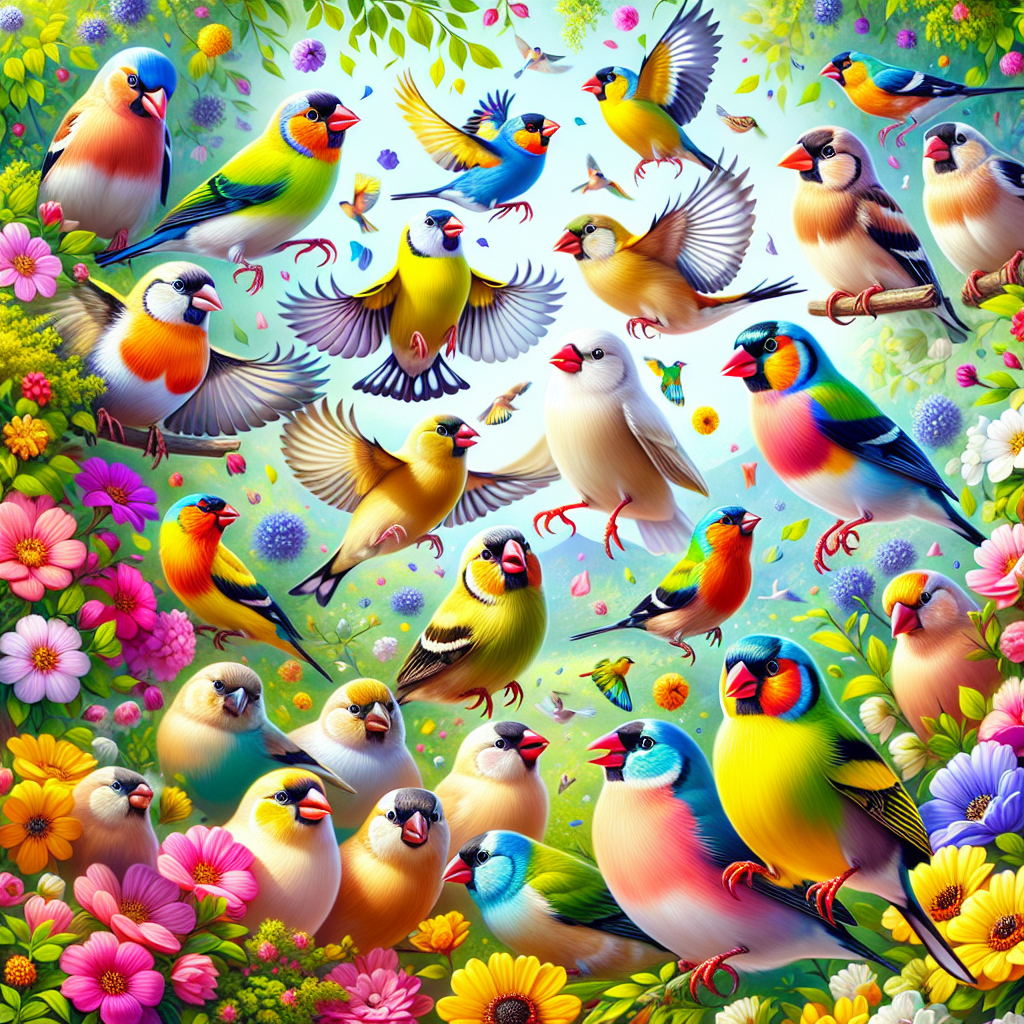The Colorful World of Finches: Unraveling the Vibrant Lives of Nature’s Little Birds

Finches are a charismatic group of small birds that showcase an astonishing array of colors and behaviors, captivating birdwatchers and nature enthusiasts alike. Belonging to the family Fringillidae, these birds are found in diverse habitats around the world—from the lush forests of North America to the arid landscapes of Africa and the unique ecosystems of the Galápagos Islands. With their striking plumage and delightful songs, finches are a true testament to the beauty of the avian world.
A Palette of Colors
One of the most mesmerizing aspects of finches is their vibrant coloration, which often plays a significant role in their mating rituals and social behaviors. Male finches typically exhibit brighter plumage than females, a phenomenon known as sexual dimorphism. For instance, the iconic American goldfinch dons a brilliant yellow coat punctuated with black wings and a cap during the breeding season. Similarly, the house finch can flaunt a rich crimson, rust, or even orange hue, depending on their diet and regional variations.
In contrast, the females’ more muted colors serve a crucial purpose: camouflage. This adaptation helps protect them and their fledglings from predators, allowing them to blend into their surroundings in bushes or trees. The variation in colors not only delights the eye but also forms a complex interplay between survival and attraction.
Social Dynamics and Behavior
Finches are inherently social creatures, often seen in flocks, especially during the non-breeding season. These gatherings provide safety in numbers and help them forage more effectively. Their communicative nature is revealed through a series of chirps, whistles, and songs that vary by species. The songs of the male finch are particularly impressive, often serving as both a territorial marker and an invitation to potential mates.
Their feeding habits are equally fascinating. Finches primarily feed on seeds, using their specialized conical beaks to crack open tough shells. However, their diet can also include fruits and insects, particularly during breeding season when additional protein is needed for raising young. This flexibility in their dietary habits underscores their adaptability—a quality that has contributed to their success across various environments.
The Evolutionary Splendor
One of the most notable chapters in the study of finches is the research conducted on the Galápagos Islands, famously associated with Charles Darwin’s theory of evolution. The various species of finches found there, now commonly referred to as "Darwin’s finches," demonstrate how adaptive radiation can lead to a multitude of forms from a single ancestral lineage. The differences in beak size and shape among these finches reflect their specialization in feeding on different types of seeds, insects, and flowers, illustrating the principle of natural selection in action.
This evolutionary narrative is not only scientifically profound but also a reminder of nature’s intricate mechanisms, emphasizing the balance between adaptability and ecological niche specialization. These birds have become emblematic of evolutionary biology, prompting ongoing research and exploration into how species adapt to changing environments.
Conservation and Our Role
While many finch species thrive, some are facing serious threats due to habitat loss, environmental changes, and invasive species. The striking beauty of these birds often belies the reality of their vulnerability. Conservation efforts are crucial in protecting their habitats and maintaining the ecosystems in which they thrive.
For birdwatchers and nature lovers, supporting local conservation groups, participating in citizen science projects, and fostering native plant gardens can make a significant difference. By creating spaces that attract finches and other wildlife, individuals can contribute to the preservation of these enchanting birds and their vibrant ecosystems.
Conclusion
The world of finches is a colorful tapestry of evolution, social behavior, and ecological significance. From the dazzling plumage of the male to the subtle camouflage of the female, each finch bears witness to the beauty and complexity of nature. As stewards of the environment, we have a responsibility to protect these remarkable creatures and the habitats they depend upon. Whether we observe them flitting through our gardens or serenading from the treetops, finches offer a glimpse into the rich diversity of life on our planet—an ever-present reminder of the wonders that nature has to offer. So, the next time you hear a melodic chirp or spot a flash of color in the foliage, take a moment to appreciate the vibrant lives of finches and their irreplaceable role in our world.